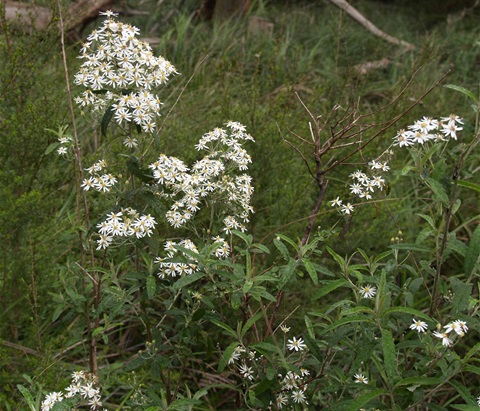
Olearia phlogopappa var. phlogopappa
Dusty Daisy-bush
Open to dense shrub with greyish-white branchlets and leaf undersides from dense covering of tiny star-shaped hairs.
Additional information
- FamilyAsteraceae
- StoreyMiddle storey
- Size1-3 m x 1-2 m
- Plant groupingShrubs 1.5-10 m
- LeavesThin dull grey-green narrowly egg-shaped leaves with blunt tip, toothed margins, finely wrinkled above from depressed network of veins, 25-80 mm x 5-18 mm.
- Flower colourWhite with yellow centres
- Flowering timeSeptember to January
- FlowersLarge bunches of daisy flowerheads to 25 mm across, at or near the ends of branches.
- Bird attractingNo
- Butterfly attractingNo
- Frog habitatNo
- Growing conditionsMoist well drained soils in moist to wet forests. Frost and snow tolerant. Dappled and semi shade.
- Garden useAn attractive plant which will also cope in full sun. Mulching soil and pruning after flowering beneficial.
- Commercially availableAustralian plant & indigenous nurseries
- Conservation statusLocally common within its preferred growing conditions
- Related speciesSimilar to Olearia lirata which can be distinguished by longer leaves with a pointed tip and smooth upper surface, with only the mid-vein depressed; 10-16 rays per floret. Pink, magenta and blue forms are also available commercially.
Photo Gallery
Photographer/s: 1, 2 Healesville Sanctuary ©; 3 Marilyn Bull ©
Plant Communities